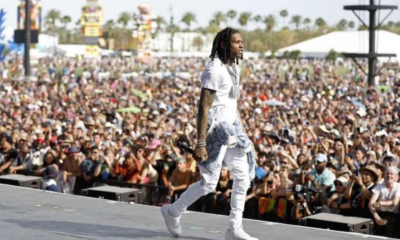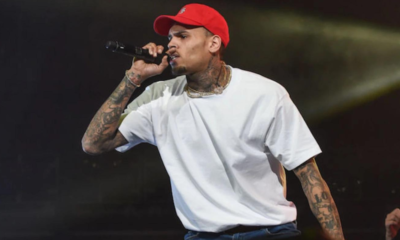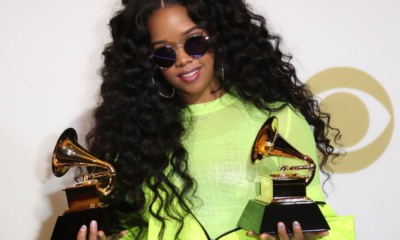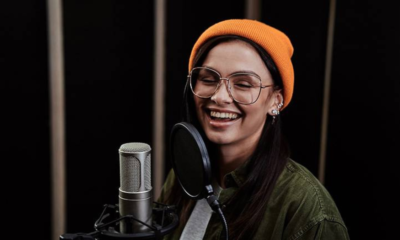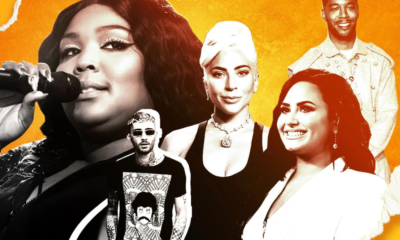Business
First wearable device for vocal fatigue senses when your voice needs a break
Singers, politicians, teachers, coaches could benefit from new smart technology
Published
1 year agoon
By
Contributor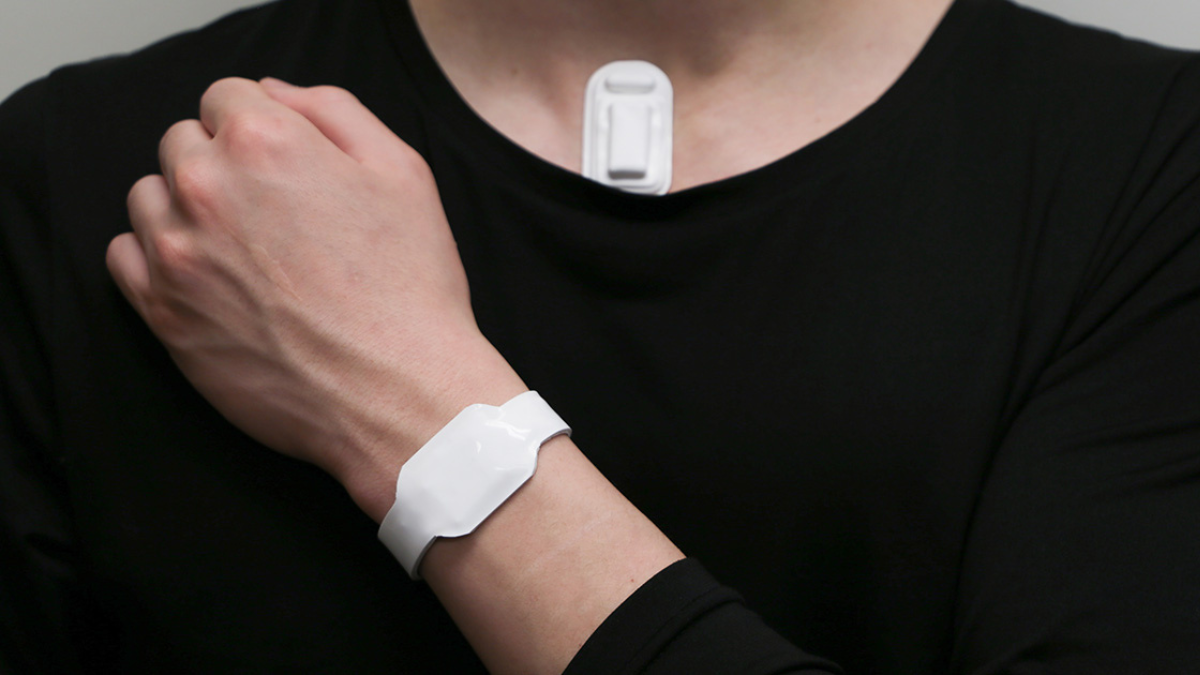
- Vocal fatigue is a common condition caused by overuse
- Sensors provide awareness around how much wearers use their voices, with the goal to prevent vocal fatigue and further injury
- Developed by biomedical engineers and opera singers, the small, soft, flexible, wireless device sits on upper chest to monitor vocal activity in real time
- Using Bluetooth, data is streamed to an app, where machine-learning algorithms distinguish singing from speaking, independent of ambient sounds
EVANSTON, Ill. — Northwestern University researchers have developed the first smart wearable device to continuously track how much people use their voices, alerting them to overuse before vocal fatigue and potential injury set in.
The first-of-its-kind, battery-powered, wireless device and accompanying algorithms could be a game-changer for professional singers, teachers, politicians, call-center workers, coaches and anyone who relies on their voices to communicate effectively and make a living. It also could help clinicians remotely and continuously monitor patients with voice disorders throughout their treatment.
Developed by an interdisciplinary team of materials scientists, biomedical engineers, opera singers and a speech-language pathologist, the research behind the new technology will be published during the week of Feb. 20 in the Proceedings of the National Academy of Sciences.
The soft, flexible, postage-stamp-sized device comfortably adheres to the upper chest to sense the subtle vibrations associated with talking and singing. From there, the captured data is instantaneously streamed via Bluetooth to the users’ smartphone or tablet, so they can monitor their vocal activities in real time throughout the day and measure cumulative total vocal usage. Custom machine-learning algorithms distinguish the difference between speaking and singing, enabling singers to separately track each activity.
With the app, users can set their personalized vocal thresholds. When they near that threshold, their smartphone, smartwatch or an accompanying device located on the wrist provides real-time haptic feedback as an alert. Then, they can rest their voices before pushing it too far.
“The device precisely measures the amplitude and frequency for speaking and singing,” said Northwestern’s John A. Rogers, a bioelectronics pioneer who led the device’s development. “Those two parameters are most important in determining the overall load that’s occurring on the vocal folds. Being aware of those parameters, both at a given instant and cumulatively over time, is essential for managing healthy patterns of vocalization.”
“It’s easy for people to forget how much they use their voice,” said Northwestern’s Theresa Brancaccio, a voice expert who co-led the study. “Seasoned classical singers tend to be more aware of their vocal usage because they have lived and learned. But some people — especially singers with less training or people, like teachers, politicians and sports coaches, who must speak a lot for their jobs — often don’t realize how much they are pushing it. We want to give them greater awareness to help prevent injury.”
Rogers is the Louis Simpson and Kimberly Querrey Professor of Materials Science and Engineering, Biomedical Engineering and Neurological Surgery in the McCormick School of Engineering and Northwestern University Feinberg School of Medicine. He also is director of the Querrey Simpson Institute for Bioelectronics. A distinguished operatic performer, mezzo-soprano, Brancaccio is a senior lecturer at Northwestern’s Bienen School of Music, where she teaches voice and vocal pedagogy.
Unaware of overuse
For the millions of people in the U.S. who make their livings by speaking or singing, vocal fatigue is a constant, looming threat. The common condition occurs when overused vocal folds swell, making the voice sound raspy and lose endurance. Vocal fatigue negatively affects singers, in particular, altering their abilities to sing clearly or hit the same notes as their healthy voice can. At best, one short period of vocal fatigue can briefly interrupt a singer’s plans. At worst, it can lead to enough damage to derail a career.
Lack of awareness is the underlying problem. People rarely make the connection between vocal activities and how those activities affect their voices. Although one in 13 U.S. adults have experienced vocal fatigue, most people don’t notice they are overusing their voices until hoarseness already has set in.
“What leads people into trouble is when events stack up,” Brancaccio said. “They might have rehearsals, teach lessons, talk during class discussions and then go to a loud party, where they have to yell over the background noise. Then, throw a cold or illness into the mix. People have no idea how much they are coughing or clearing their throats. When these events stack up for days, that can put major stress on the voice.”
Cross-disciplinary connection
As an advocate for vocal health, Brancaccio has spent decades exploring ways to keep her students mindful of how much they use their voices. In 2009, she challenged her students to keep a paper budget — physically writing down every time they spoke, sang and drank water, among other things. About 10 years later, she converted the system into Singer Savvy, an app that offers a personalized vocal budget for each user and helps users stay within that budget.
Separately, Rogers, in collaboration with researchers at the Shirley Ryan AbilityLab, had developed a wireless wearable device to track swallowing and speech in stroke patients. The bandage-like sensor measures swallowing abilities and speech patterns to monitor stroke patients’ recovery processes. In the early weeks of the COVID-19 pandemic, Rogers’ team modified the technology to monitor coughing, as a key symptom of the illness.
“I wanted to gather more data and make our tracking system more precise and more accurate,” Brancaccio said. “So, I reached out to John to see if his sensors could help us gather more information.”
“I thought it was a great opportunity for us to extend our technologies beyond our very important, but narrowly targeted, uses in health care to something that might capture a broader population of users,” Rogers said. “Anyone who uses their voice extensively could benefit.”
The pair also partnered with speech pathologist and voice expert Aaron M. Johnson to explore how the devices could be used to evaluate and monitor treatment for patients with vocal disorders. Johnson, who co-directs the NYU Langone’s Voice Center, said the small, wireless device could help track patients’ voices in the real world — outside of a clinical setting.
“A key part of voice therapy is helping people change how — and how much — they use their voice,” said Johnson, study co-author and associate professor in the department of otolaryngology at NYU Grossman School of Medicine. “This device will enable patients and their clinicians to understand voice use patterns and make adjustments in vocal demand to reduce vocal fatigue and speed recovery from voice disorders. Generalizing vocal techniques and exercises from therapy sessions into daily life is one of the most challenging aspects of voice therapy, and this device could greatly enhance that process.”
Singer-trained algorithms
The team modified Rogers’ existing devices to precisely measure vocal load over time. That includes frequency, volume, amplitude, duration and time of day. Like Rogers’ previous devices for COVID-19 and stroke patients, the new device also senses vibrations rather than recording audio. This enables the device to detect vocal activity precisely from the user, rather than the ambient noise surrounding them.
The biggest challenge was to develop algorithms capable of distinguishing speaking from singing. To overcome this challenge, Brancaccio recruited voice and opera students to undertake a variety of singing exercises to train the machine-learning algorithms. A team of classical singers with different vocal ranges — varying from bass to soprano — wore the devices while humming, singing staccato scales and songs, reading and more. Each singer generated 2,500 one-second-long windows of singing and 2,500 one-second-long windows of speaking.
The resulting algorithm can separate singing from speaking with more than 95% accuracy. And, when used in a choir setting, the device captures only data from the wearer and not noise from nearby singers.
“Prolonged talking is one of the most fatiguing activities for people who are training to become professional singers,” Brancaccio said. “By separating singing and speaking, it can help people develop more awareness around how much they are speaking. There is evidence that even brief 15- to 20-minute periods of total silence interspersed throughout the day can help vocal fold tissues recover and repair.”
How to use it
To use the device, the wearer simply adheres it to the sternum, below the neck, and syncs the device with the accompanying app. Rogers’ team currently is working on a method to personalize vocal budgets for each user. Here, users will press a button in the app if they experience vocal discomfort at any point during the day, effectively capturing the instantaneous and cumulative vocal load at the time. These data can serve as a personalized threshold for vocal fatigue. When the user nears or exceeds their personalized threshold, a haptic device will vibrate as an alert.
Similar in size and form to a wristwatch, this haptic device includes multiple motors that can activate in different patterns and with varying levels of intensity to convey different messages. Users also can monitor a graphical display within the app, which splits information into speaking and singing categories.
“It uses Bluetooth, so it can talk to any device that has a haptic motor embedded,” Rogers said. “So, you don’t have to use our wristband. You could just leverage a standard smart watch for haptic feedback.”
Although other vocal-monitoring devices do exist, those use big collars, tethering wires and bulky equipment. Some also use embedded microphones to capture audible vocal data, leading to privacy concerns.
“Those don’t work for continuous monitoring in a real environment,” Brancaccio said. “Instead of wearing cumbersome, wired equipment, I can stick on this soft, wearable device. Once it’s on, I don’t even notice it. It’s super light and easy.”
What’s next
Because Rogers’ previous devices capture body temperature, heart rates and respiratory activity, the researchers included those capabilities in the vocal-monitoring device. They believe these extra data will help to explore fundamental research questions concerning vocal fatigue.
“This is more speculative, but it might be interesting to see how physical activity affects vocal fatigue,” Rogers said. “If someone is dancing while singing, is that more stressful on the vocal folds compared to someone who is not physically exerting themselves? Those are the kinds of questions we can ask and quantitatively answer.”
In the meantime, Brancaccio is excited for her students to have a tool that can help prevent injury. She hopes others — including non-singers — will see the benefit to keeping their vocal cords healthy.
“Your voice is part of your identity — whether you are a singer or not,” she said. “It’s integral to daily life, and it’s worth protecting.”
The study, “Closed-loop network of skin-interfaced wireless devices for quantifying vocal fatigue and providing user feedback,” was supported by the Querrey Simpson Institute for Bioelectronics at Northwestern University.
Business
Why Are So Many Rap Concerts Getting Canceled?
From a handful of Lil Baby concert stops to large events like the Made in America festival, rap concerts have been getting canceled quite frequently in recent years.
Published
9 months agoon
August 17, 2023By
Contributor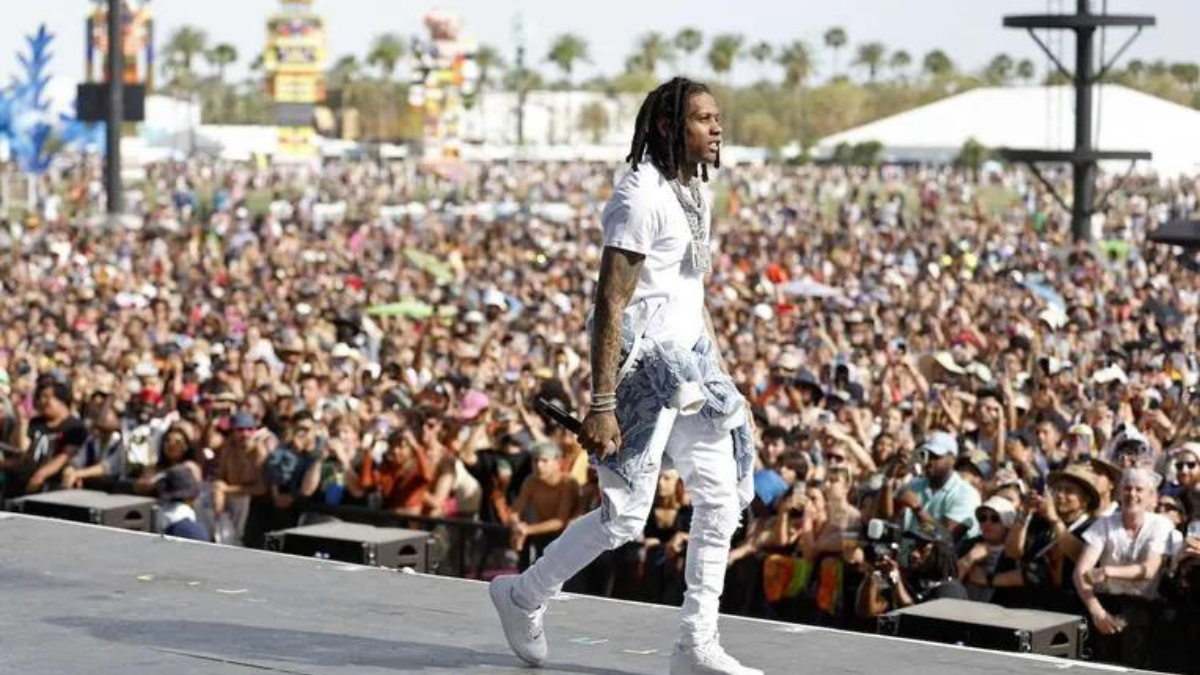



Dan Runcie


Lizzo at a concert in Minnesota (via Manitou Messenger)
Nicki Minaj’s NICKIHNDRXX Tour — canceled in North America. Chance the Rapper’s Big Day Tour — canceled everywhere. T-Pain’s 1UP DLC Tour — canceled. Cardi B’s Invasion of Privacy Tour— chose not to do one.
Touring’s traditional model needs work. Cancellations have happened for years, but this recent wave is different. Many hip-hop artists overestimate demand for ticket sales. We live in an era with endless data, but touring decisions still seem like the industry blindly throws darts. Meanwhile, artists who can sell out those same venues have proudly taken new approaches. These trends are connected.
The popularity of music festivals and concert residencies have added new variables to the live performance mix. Mainstream artists are on a quest to maximize each option. Some are farther along than others. But by the time the majority of rappers find the ideal balance, the touring business might be behind the curve.
Opportunity cost is higher than ever
When artists are on tour, they’re on the road day-in, day-out. It’s traditionally seen as a justifiable tradeoff since many artists earn a majority of their revenue from touring. But it’s still time-intensive, laborious, and costly.
Here’s what I wrote in 2018 in Why Choosing the Right Concert Venue Matters:
A few years ago, Beyoncé, like Drake, once played it safe with concert tours. In 2013 and 2014, The Mrs. Carter World Tour earned an impressive $230 million, but it took Queen Bey 132 shows and twelve months of touring to do so…
Had Beyoncé subjected herself to the same arenas for [On the Run Tour, The Formation World Tour, and On The Run II Tour], she would have needed to perform an additional 207 shows since 2014 to match the $565 million her concerts have grossed in revenue. It would have been impossible to do all those shows while pregnant with the twins, make Lemonade, and do all the other stuff Beyoncé does.
There’s only a handful of artists like Beyonce who can justify the jump to a stadium. For the rest, festivals and short-term Las Vegas residencies are a viable alternative.
But even Taylor Swift has moved on from stadium tours. This summer the 1989 singer will do a European festival run (like Cardi B did last summer), then launch her own festival, Lover Fest, in Boston and Los Angeles. It doesn’t get more 2020 than that.
In an August interview with Ryan Seacrest, she explained why she didn’t do a traditional tour:
“I’m not quite sure what we’re doing with touring. I don’t want to do the same thing every time because I don’t want my life to feel like I’m on a treadmill. There’s a lot that goes into touring that nobody knows about — like you have to reserve stadiums like a year and a half in advance, and that to me is a lot. With ‘Reputation,’ I knew that nobody would really fully understand the album until they saw it live, but this album is different because people are seeming to get it on the first listen.”
All that’s true, but let’s remember two things. First, Taylor is in a select group of artists who can sell out the Rose Bowl, Soldier Field, and MetLife Stadium on back-to-back nights. She wouldn’t forgo that opportunity unless it made financial sense. Second, she’s right about the challenge in reserving venues eighteen months in advance. It’s especially frustrating for those who rise quickly and can’t easily pivot. It’s a good problem to have, sure. But it’s still a problem.
Last year, Lizzo rose to stardom so fast that she outpaced her touring revenue. According to Billboard, last spring’s Cuz I Love You Tour was performed in front of crowds of less than 2,000 people, grossing just over $50,000 per night. To capitalize on her momentum, she came back in the fall with the Cuz I Love You Too Tour at venues that were twice the capacity. But by that point “Truth Hurts” was #1 on the charts and nominated for Grammys. She still couldn’t keep up.
My wife and her friends bought tickets for Lizzo’s October show in San Francisco. They bought tickets at face value back in May for $50. The week before her show they were selling on StubHub for $350! It was a scalper’s dream but an artist’s biggest frustration. All the value was captured by the secondary market. Sure, there’s a chance Lizzo pulled a Metallica-Live Nation and scalped her own tickets. But if that ever happened… whew buddy. The Lizzo hive (and the anti-Lizzo hive) would have burned the internet down by now.
Hip-hop has an uphill battle
The mentality required to succeed in hip-hop and touring is in direct conflict. Most mainstream rappers take pride in beating the odds. They had to bet on themselves to make it this far. Why stop now?
But touring requires far more pragmatism. It’s economics. When supply meets demand, everyone’s happy. Those economics can be especially challenging for hip-hop though, where its streaming popularity outweighs its touring performance.
In a 2018 Wall Street Journal article, Neil Shah broke down how hip-hop may rule the record industry, rock is still king on the road:
There are many reasons that rock remains so powerful on the road, including that, as an older genre, it had a head start on pop and rap. Giant tours by older rap icons like Jay-Z aren’t as common. Fans of newer hip-hop artists skew younger, including teens with less disposable cash, making festival gigs more economical than lengthy, sprawling tours.
“Drake can do four Madison Square Garden shows, but Phish can do 17,” says Peter Shapiro, a New York-based independent concert promoter. Especially in the day-to-day business of clubs and theaters, rock bands, he adds, “still have a huge impact.”
This can make it mistakenly easy for an artist who dominates on RapCaviar or SoundCloud charts to think they are ready for the biggest stages available. Of the top 10 global tours of 2019, none of them were hip-hop. In 2018, just one (Beyonce and Jay Z’s On The Run II). Genre plays a factor.
A good clip from The Joe Budden Podcast where they break down Chance’s canceled tour.
Artists bet on themselves, which is costly
Challenges arise when artists who were once the hot kid start to cool off and need to accept reality. They might not be DONE done, but their prime days are behind them.
That’s where Nicki Minaj and Chance the Rapper are at. Neither admitted that low demand drove their cancellations, but we can follow T-Pain’s humble advice and read between the lines. Several industry insiders believe that both Nicki and Chance couldn’t sell enough tickets to fill 25+ arenas across the US. (I also covered Nicki’s ticketing woes in the Globalization of Hip-Hop, Part I and Chance the Rapper’s in a recent Member Update.)
When both rappers first announced these tours, I thought to myself, “Who the hell gassed them up to think they can still command an arena tour? Who signed this off?” There are plenty of fingers to point, but honestly, neither rapper needed extra convincing.
Keep in mind, Nicki spent the past decade silencing doubters who never thought a female rapper could reach the heights she did. Chance proved the industry wrong as an indie rapper who won Grammys and did arena tours. Their brand is to stay resilient when projections told them otherwise. You wanna go back in time and try to convince them that the lackluster responses to “Chun-Li” and “Groceries” were signs of what’s to come? Yea, good luck with that.
Their mentality is understandable, but it distorts reality. And as more superstars like Taylor and Cardi consider alternatives to touring, promoters may be stretched to fill those same venues with artists who can’t compete in that weight class. It will inevitably lead to more cancellations.
There are levels to this
The traditional touring model is extremely linear. There are tons of venue options for rising rappers who want to perform for a few hundred or a few thousand people. But the leap to arenas (~15,000) is no joke. The jump up to stadiums (~50,000+) is even steeper. The artists at the in-between stages are more likely to leave money on the table or cancel because they couldn’t sell.
The popularity of festivals, residencies, and private events add more options to meet demand:


As AR/VR capabilities develop, more of them will be added to this mix too
I made a similar chart last year on how the traditional albums model has evolved with “mixtapes,” visual albums, podcasts, and more. The trend is similar here. Increased options lead to more experimentation and put artists in control.
Where is this all heading?
This trend should be top of mind for both Live Nation and AEG, which own and operate thousands of venues. It should also concern those who individually manage their venues.
I don’t expect arenas to shorten the timeline for advance booking or cancellation policies. That’s the nature of events in popular venues, whether it’s a wedding or a Migos concert. But they can lean into the trend by pitching themselves as locations for festivals, residencies, private events, or mixed reality experiences. It may be hard to compete against the machine of Coachella, but Rolling Loud and plenty of other festivals are more open to working with what’s available.
By now, every rapper with a big enough following has had at least wondered, “What if I launched my own Astroworld or OVO Fest? Should I do a Vegas residency too?” As I laid out in Why Rappers Started Running Their Own Music Festivals, artists want to leverage their power and run the show. They want the money from the highest profit margin areas of live performance, like sponsorship and concessions. It’s the same model that Floyd Mayweather uses in his boxing matches. He rents out the building and collects the revenue from everything else.
Touring will always be key for the up and comers who want to meet their day-ones. It worked for Meg the Stallion in the rooftop cypher days and Cardi B in the Love & Hip-Hop days. It will always be a core for the legacy artists who can draw crowds wherever—like Rolling Stones, Elton John, or Jay Z. But there’s a whoooole lot of artists between up-and-comers and Hov.
These artist want more options, and the market can offer them. The rest of the industry will be forced to adapt sooner or later.
READ MORE: https://trapital.co/2020/01/09/the-hip-hop-touring-business-is-broken/


Dan Runcie
Founder of Trapital
Business
CHRIS BROWN: The Top Recording Artist ALIVE [Vocal Range]
Chris Brown, American recording artist, and an actor were born in Tappahannock, Virginia to Clinton Brown a corrections officer at the local prison and Joyce Hawkins, former director of a daycare center.
Published
12 months agoon
May 13, 2023By
Contributor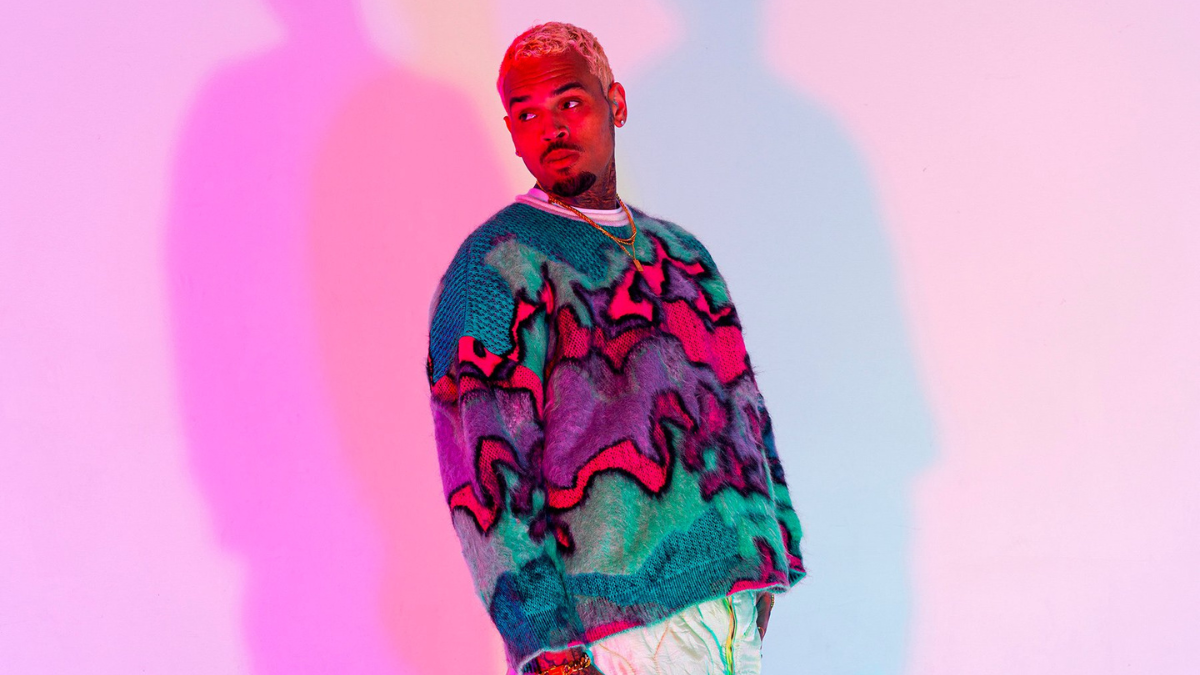

His keen interest in music and dance made him teach himself both the arts and he declares that Micheal Jackson was his role model. He also participated in the local church choir and local talent shows. His perfection in mimicry of an Usher performance made his mother realize his potential and she started looking for a record deal opportunity.


Chris Brown’s Voice Type & Vocal Range
Chris Brown has a light Lyric tenor vocal style. His vocal potential was first discovered by his mom when he was still a kid. Brown reveals to People magazine that he was 11 and watching Ushers performance ‘My Way’, and I began endeavoring to impersonate it. My mother resembled, ‘You can sing?’ And I resembled, ‘Well, no doubt, Mama.” in this way, and began to sing.
Voice Type: Light-Lyric Tenor
Range: E2-E5-G#5


Chris Brown’s voice sits high up. He has relative easiness in the fifth octave (Yeah 3x, This Christmas, Crawl). The strain really makes it difficult for him to sing there, yet he does not have much of a problem. He likewise sings to be a baritone in the E4-G4 range effortlessly.
Not so sure where this originates from, yet I have seen it many times previously. In fact, He is brighter and lighter than the spinto. Due to the fact that the spinto will have a more substantial, warmer and substantial voice. Chris’ voice is awfully splendid and light to be a spinto.
He has a light and thin voice. His voice is additionally surprisingly energetic. Thus he should be a light-verse tenor.
Achievements
At the tender age of sixteen, Chris Brown made his debut with an album titled “Chris Brown” featuring the runaway hit single “Run It”. This song topped the Billboard Hot 100 in 2005 making him the first male artist whose debut song topped the chart after Montell Jordan had achieved the same in 1995. The RIAA (Recording Industry Association of America) awarded the album a double-platinum certification and it sold more than 2 million copies in the US.
Riding on this success Chris Brown, American recording artist released his second studio album in 2007 November titled “Exclusive”. This album had two hit singles “Kiss-Kiss” featuring T-Pain and was number one and “With You” which became number two in the Billboard Hot 100 and was awarded a Platinum certification by RIAA. “The Forever edition” which is a deluxe version of his album with the single “Forever” was released in 2008 in May and this also peaked at number two position in Billboard Hot 100. “Graffiti” his third album was brought out in 2009 December and its official single “I Can Transform Ya” came up to number 20 in the Billboard Hot 100 becoming Chris Brown’s eighth hit on the charts.
Brown has other hits under his belt such as “No Air” with Jordin Sparks, “Shawty Get Loose” with Lil Mama and T-Pain, “Shortie Like Mine” with rapper Bow Wow all of which reached within number ten in the Billboard Hot 100. His dancing capabilities gave him an extra edge over other singers and he was compared to Micheal Jackson and Usher. On the negative side, Brown was given five years probationary sentence and 6 months community service for assaulting singer Rihanna. In 2010 May Chris Brown American recording artist brought out “Fan of Fan” a mixtape with Tyga and “Deuces” from this tape was released in 2010 June reaching the number one position in the U.S.
Musical Style & Influences
Chris Brown has referred to various artists as his motivation, overwhelmingly Michael Jackson. Chris Brown underlines that “Michael Jackson is the motivation behind why he involved himself in the music industry at the beginning of his music career. In “Fine China,” he represents Jackson’s impact both musically and outwardly as Britini Danielle of Ebony magazine mentioned that the melody was “reminiscent of Michael Jackson’s Off the Wall”.
And He also did mention that Usher is another role model in the music industry who seems to be a more contemporary figure for Brown. He discloses to Vibe magazine about Usher that he was the person who the youths gazed up to, in the singing and dancing world, admired him, and keeps up “If it was not for Usher, at that point Chris Brown couldn’t exist.”
Some critics suggested that Chris Brown’s first experience with R&B, perceiving his contemporary adaptions and flexibility in R&B music. As customary R&B prospered around him, the youthful singer started the development of the genre”. His first single “Run It!” as a “prelude to what Brown would keep on doing for the following decade: determinedly upset develops of blues and rhythm.
Business
TOURING AND THE SINGER
Touring artists experience a wide range of issues including physical and vocal fatigue, mental boredom, poor health…
Published
1 year agoon
May 10, 2023By
Contributor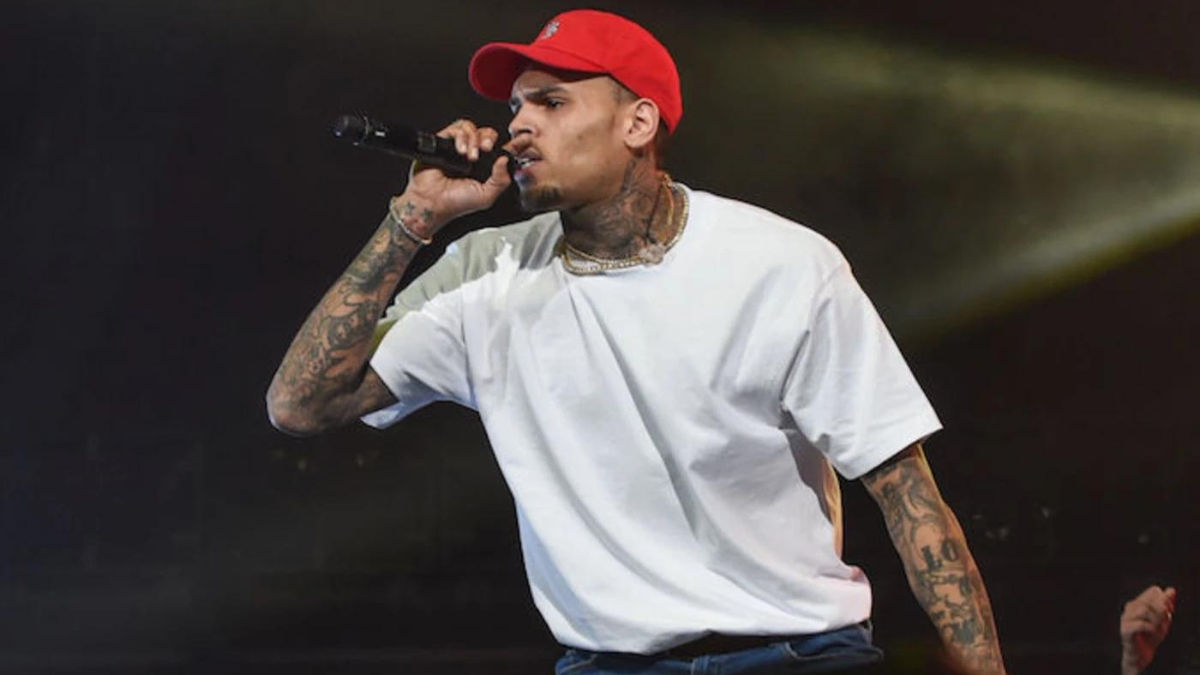

1. How important are vocal warm-ups and why?
Warm-ups are almost more important than vocal technique practice. It is vital to ensure we are getting the vocal ligaments and the intrinsic vocal muscles ready to do the job required during singing. When we talk we only use a limited range of pitches (around a major third or so) but when we sing we may use over two octaves. By warming up we are getting the different layers of the vocal folds ready to work at the higher frequencies required for singing. It is also important to get the larynx and the articulatory muscles ready to deal with singing lyrics. If we don’t get the voice ready and warmed up then we are running the risk of inducing vocal fatigue and ultimately misuse which could lead to vocal pathologies such as vocal fold oedema (swelling), nodules or polyps.
2. How important is vocal technique and why?
The reality is that there are many contemporary commercial singers with a successful career who do not have vocal technique to back their art or the vocal workload experienced as a touring singing/artist. It may be possible to get away with poor vocal technique in the short term or the studio setting, where it is possible to record as many tracks as necessary to get a good take. But when one is performing, live and touring, poor technique will eventually have a negative compound effect on the vocal folds, which increases the risk of injury. Having a well structured technical regime not only helps the singer to build range, stamina, strength and vocal control but will also help to readdress any imbalances acquired during the performance. Understanding how the voice works technically will help the singer to make the right choices when it comes to repertoire, vocal style, use of range or singing with a tired or sick voice.
When it comes to the creative side technique will ensure that the artist can realise their creative vision, to sing unhampered by limitations of vocal range, the ability to transition easily between registers, breath management, vocal tone, the ability to sustain long notes, vocal qualities and dynamic control.
3. What physical and mental effects can touring have on an artist? How can this contribute to vocal health problems?
Touring artists experience a wide range of issues including physical and vocal fatigue, mental boredom, poor health, disruption to dietary and daily routines, feelings of isolation from friends and family. Whether they are travelling in a band van, tour bus or flying, most artists suffer from disruption in sleep, daily routine, dietary habits etc. When there is a group of people travelling together in close proximity there is also an increase in risk for communicable illnesses such as colds and cases of flu. Flying may cause dehydration and vocal fold swelling due to an increase in atmospheric pressure. This may cause the voice to be husky or hoarse and limit the singer’s ability to access their upper/lower ranges. Environmental conditions such as air-conditioning, heating, humidity, dryness, altitude and cold temperatures will also impact the singer’s physical, mental and vocal health. In addition, if they are crossing time-lines then jet-lag will contribute by reducing physical and mental function. Being tired, stressed, rundown or dehydrated will impact the vocal fold’s ability to function optimally resulting in loss of range, tonal quality and sustainability.
4. Are vocal health problems more common today? Or do you think artists are more open about their health as it is mediated in the press more?
I think it is a combination of instant media and the kind of pressure, vocally and physically the current day artist is under. Pressure to ensure they sell their music and make money for their label etc. This means that they tour heavily and they are obliged to do a heavy load of publicity and networking, in turn, their voice does not get as much rest as it needs to do its job on stage night after night. Depending on the label/management tours may be more intensive with more performances packed in over a shorter period. Some labels have a policy of not allowing their artist to do more than three shows in a row, but not all artists are well looked after in this way. In the past, it would have been viewed more negatively by the public/fans if they knew that the artist was having vocal problems. Today people seem to think it’s par for the course as there is so much in the media about singers who have to cancel tours and gigs due to voice problems.
5. If there is no option to cancel a show a steroid injection may be required. What are the effects of this? Is it only temporary? Can it do more harm than good?
Steroid injections can be very effective in the short-term to help a performer get through a show. When a major artist cancels it means the loss of millions of dollars. So the management tries hard to prevent this from occurring. One-off steroid injections do not commonly have long-term medical side-effects. It only becomes problematic when this becomes a regular dose. Having an injection does carry a risk of injury if it is not done safely and accurately. High or prolonged doses of steroids (injections or tablets) will impact the body systemically e.g. excess fat distributed weirdly, prone to infections, and a risk of injury to the vocal folds such as nodules, haemorrhage or laryngitis.
Given appropriately and safely a steroid injection can save the day.
6. Are there any other ‘quick fix’ medicines that are used on tour? What are the effects?
I can’t think of any. I imagine any kind of analgesia that helps with pain might be used in some cases. Depending on the type of the analgesia will depend on the side effects. Obviously, narcotics run the risk of dependency and poor motor control. Some of the more common over the counter types such as paracetamol and codeine can cause constipation if taken regularly. Salicylates (e.g. aspirin) act as blood thinners and are not recommended for singers as a possible side-effect could be vocal fold haemorrhage.
7. Is it necessary to have surgery or will the body fight back if it’s allowed complete vocal rest?
Surgery depends on the type and severity of the vocal pathology as well as the time constraints of the artist. If there is pressure for the artist to get out and work e.g major tour, imminent album launch or significant performance then the powers that be are more likely to opt for surgery. If the artist/singer is not under such pressure or can’t afford surgery then alternative options may be considered at first.
- These days vocal nodules are generally treated with therapy and vocal technique if they are in the pre-nodular or soft stages. Some surgeons will treat hard nodules with surgery, though I have seen cases where nodules have not been surgically removed and the singer had successful rehabilitation through voice therapy and correction of poor vocal technique.
- Vocal polyps and severe haemorrhages, cysts and granulomas generally require surgical intervention. The singer is then on vocal rest for 2-3 weeks.
- Vocal oedema requires rest and addressing the cause.
- Infections and laryngitis do not require surgery.
It very much depends also on the doctor i.e. their training and experience. An ENT surgeon or ENT/laryngologist who works with singers a lot will tend to only do surgery if necessary, and there is no response to voice therapy and/or addressing the cause.
Vocal rest will help in many instances but the problem may re-occur if the cause is not addressed. Many common voice issues in singers can be dealt with through rest, rehydration, good vocal technique and a balanced healthy diet.
8. Do you think audiences have higher expectations when going to watch an artist perform? ie: Pitch, physically performing.
With the use of auto-tuning in the studio, audiences have come to expect a singer to sing perfectly. This is compounded by the impact of music videos and the use of lip-syncing, as well as the use of auto-tuning in the live setting. Having said that the general listening audience is not always focusing on things such as pitch or even lyrics, for them, it’s the experience of the live performance.
9. What is your advice for a singer going on tour?
Where possible sleep – cat naps are as useful to the body as whole night sleeps, ensure you are getting 1.5 to 2 L of water a day, take dietary supplements, avoid respiratory infections like the plague. Take your own pillow on tour, healthy snacks, eyeshades, earplugs, nebulizer with normal saline, throat massager and most importantly straws so you can do regular straw therapy.
Don’t expect your voice to be able to work optimally if you don’t look after it, excessive talking, alcohol, smoking, drugs, poor diet and late nights will prevent your voice from working to its best.
At the end of the day, this is your job and what your audience is paying for. You are the equivalent of a vocal athlete. Follow these tips:
- maintain a regular and personalised vocal exercise regime
- do warm-ups and downs before/after a performance
- if possible change repertoire, vocal range and performance energy to accommodate the days when you or your voice are fatigued
- check in regularly with a vocal coach who understands how to keep you vocally fit and healthy
- do physical exercise to ensure your body is supporting your voice.
- Keep well hydrated
- Maintain a healthy and balanced diet with supplements to boost your immune system
- sleep whenever possible
- avoid sick people!


Why Are So Many Rap Concerts Getting Canceled?



CHRIS BROWN: The Top Recording Artist ALIVE [Vocal Range]


TOURING AND THE SINGER
Trending
-



 Business2 years ago
Business2 years agoThe Day Jordin Sparks Stopped Singing
-


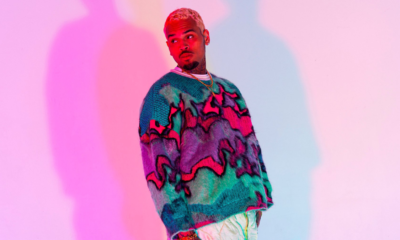


 Business12 months ago
Business12 months agoCHRIS BROWN: The Top Recording Artist ALIVE [Vocal Range]
-

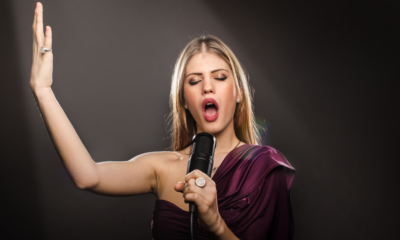

 Business2 years ago
Business2 years agoTVM-TV LIVE
-

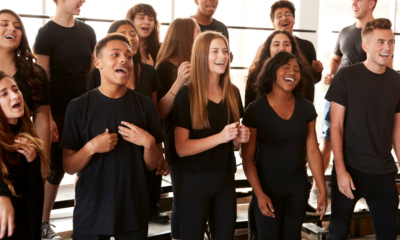

 Business2 years ago
Business2 years agoBenefits of Joining a Choir
-

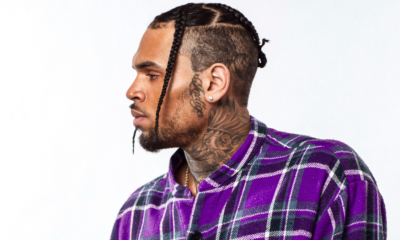

 Business2 years ago
Business2 years agoChris Brown’s 12th Studio Album “Breezy”
-

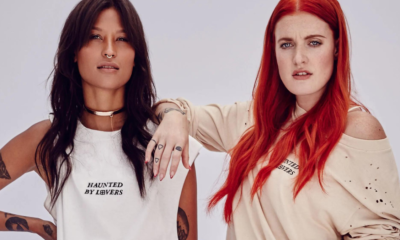

 Tech7 years ago
Tech7 years agoICONA POP
-



 Business2 years ago
Business2 years agoFood for Singers: The Diva Diet
-

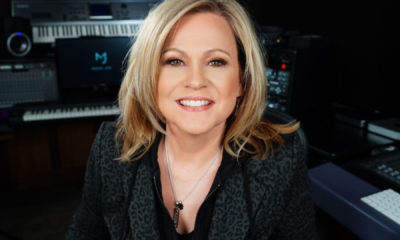

 Business2 years ago
Business2 years agoINTERVIEW WITH MAMA JAN


